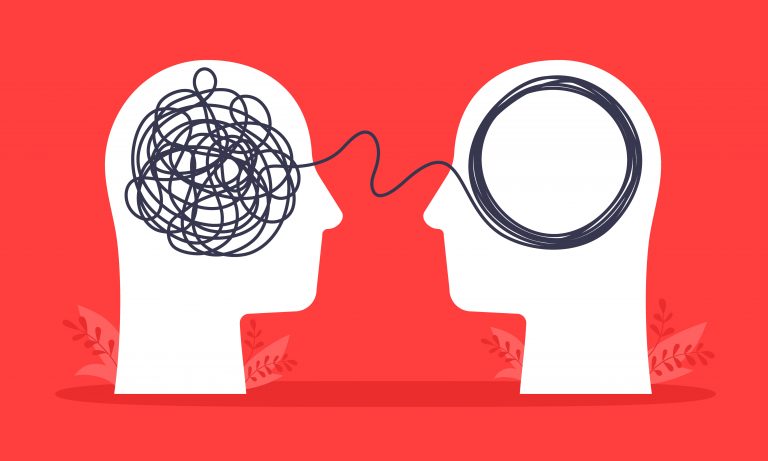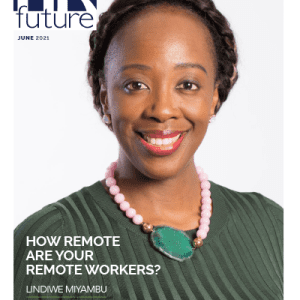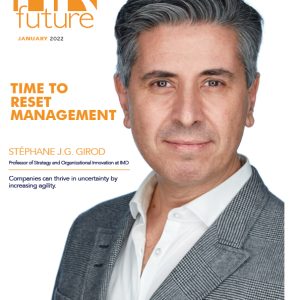Breaking away from the shackles of artificial harmony and embracing healthy conflict in a business is the best way to unlock the performance potential of individuals and teams. But it’s not an easy process and requires nurturing, introspection and a deeper understanding of our blind spots.
“If you avoid conflict to keep the peace, you start a war inside yourself” is a phrase that best describes the likely outcome of team members who coexist in an environment of artificial harmony.
A common misconception is that harmony in teams is desirable and therefore reaps positive results. However, many leaders do aspire to achieve just that: a harmonious working environment where there is as little conflict or discord as possible. But we all know unequivocal agreement and consensus on all matters arising is practically impossible. Thus leaders need to answer the question: Does a lack of conflict yield the results you’re aiming for if everyone on your team agrees on everything?
Various studies have shown that that answer to the question is more often than not a no. Instead, cognitive diversity is imperative for businesses that want to encourage different ways of thinking that lead to positive and often unexpected results. For that reason, we seek out people with different backgrounds and ways of thinking when recruiting. For us, difference equals magic. It enables deep thinking, robust debate, and engagement. But to achieve that, we need to nurture people’s ability to be comfortable with the rigours demanded of healthy conflict.
Nurturing the ability to embrace healthy conflict
Robust debate and disagreements can be enormous triggers for certain personalities. Many people are not comfortable with disputes in a team and will do anything to avoid this. What usually transpires is that people agree just to maintain a sense of accord and prevent any tension.
But this ultimately has a negative impact because tensions build beneath the surface when we don’t share our honest views. More damaging is that this can sometimes result in sidebar discussions post meetings with colleagues who we believe share our sentiments. This is where white-anting, which erodes the foundation of the team, and resentment is born. Trust is then eroded, motivation undermined, and ultimately, performance and productivity adversely affected.
Self-awareness is not something new. Self-awareness is achieving an accurate view of one’s skills, abilities, and shortcomings. The level of self-awareness of each member of a team dramatically affects how a team collaborates, communicates, and performs. Without self-awareness, we move through life disconnected from how others perceive and experience us.
Self-awareness is critical for individual and team success. The most prominent problem teams face is not knowing what they don’t know. Blind spots, assumptions, and over-confidence hinder the performance of both individuals and teams. Blind spots are traits of which we are usually unaware until someone points them out.
Embracing cognitive diversity through awareness
Businesses that offer team members a reliable means for increasing awareness stand to benefit considerably – and the Enneagram does just that. It is a valuable tool that helps individuals and teams perform optimally by shining a light on different personality traits and the behaviours that could be blind spots.
The Enneagram provides a holistic picture of our personalities and the patterns associated with the way we function.Working with the Enneagram enables us to build the foundations needed to foster a sense of psychological safety and trust, enabling a higher quality of collaboration, collective learning, and ultimately performance.
When conducting an Enneagram assessment, you can expect the following:
- A detailed and in-depth report that tells you what your type is, along with what drives you and what behavioural patterns detract from your success.
- It identifies patterns and habits that you can overcome
- You gain a deep understanding of your enneagram type and how you act out in situations, both positively and negatively. It gives you the tools you need to engage in conscious behaviour and course-correct to break old habits that are not serving you.
- After determining the Enneagram type of each individual in a team, you get valuable insights into how each personality type copes with difficulties and manages disappointment. Understanding how you, and your fellow team members, react is essential knowledge if you, and your team, want to grow.
- The Enneagram refer to three groups, collectively known as the Harmonics.
- The Positive Outlook group is a team that is very likely to avoid or try to escape the conflict. The Competency group is more likely to compartmentalise their feelings and dive into objective and logical problem resolution. The Reactive group responds with strong emotions and needs to know the extent of other people’s support and commitment. By sharing these tendencies, team members understand how they are likely to react and what needs to change. Based on this knowledge, they can learn how to respond using their emotional intelligence rather than react based on their emotions.
Artificial harmony
When we agree to things to avoid feeling uncomfortable, the brain processes this dissonance negatively – because our thoughts and actions are incongruent. This creates a false sense of alignment among team members – something we call artificial harmony. This is a very common phenomenon practised in business and corporate environments for the simple reason of self-preservation because speaking up is usually seen as costing you something, doesn’t it?
According to Patrick Lencioni, artificial harmony exists when we act as we agree, yet frustrations and dislikes exist.
Teams usually evolve to become high-performance teams through a set of development stages as they negotiate their shared values, priorities and ways of working together.
Examples of artificial harmony in action
Managers often avoid confronting team members who consistently underdeliver and avoid having tough conversations. Typically, they instead opt to delegate the work to the star players on the team. This causes an imbalance of responsibility, and the star performers ‘burn out’ eventually.
Artificial harmony in action is really the resentment that bubbles beneath the surface of all members of the team – the exceptional executors, the poor performers and the manager.
Exceptional teams
Teams committing to introspection and creating unique contracts and effective ways of working together will harness the gifts of their team style.
Exceptional teams are not born. They are established through consistent and deliberate action. Exceptional teams are the ones who shoot the lights out. They work smart and achieve the 10 X goals. They are not the ones who meet the basic requirements of their jobs; they are the ones who produce unexpected results. Extraordinary results are usually achieved in environments where there is trust, diversity, and transparency – traits that are not inherent in all teams and need to be discovered, adopted and nurtured.
Teams would be exceptional if we all stepped into our courage and embraced the diversity of perceptions and opinions that inevitably exist in a team. To solve complexities in business, we need teams to adopt an agile and adaptive mentality, and it’s a leader’s job to augment these varied views to serve a bigger purpose than individual agendas.
A to-do list to build genuine team harmony
Even among the best teams, cognitive diversity may at times be uncomfortable. Thus you need to invest time and commitment into the process of nurturing a team’s comfort level with healthy conflict.
Understanding and changing habitual patterns doesn’t happen overnight – both for individuals and teams. Understanding everyone’s viewpoints and gauging their comfort levels with disagreement is important because these can differ radically.
Other actions that need to be taken to bolster an individual or team’s capacity to embrace dissonance include the following:
- Identify your comfort zones and step out of them.
- Make time to step back because this will allow you to process and internalise your experiences and relieve any feelings of anxiety.
- Identify hot buttons/triggers you need to address.
- Develop insights into effectively navigating the inevitable discomforts that will come up when engaging in robust debates.
- Come up with a joint team vocabulary that engenders trust and respect.
- Engage with compassion and intent.
Genuine harmony is not when everyone agrees; it’s when we can respect our disagreements and still play in the sandbox together until we create magic together.
Wendy Bergsteedt, Group Head of Marketing at Coronation Fund Managers and Chrizelda Walters, Consciousness Coach & Industrial Psychologist at FAB consulting.













